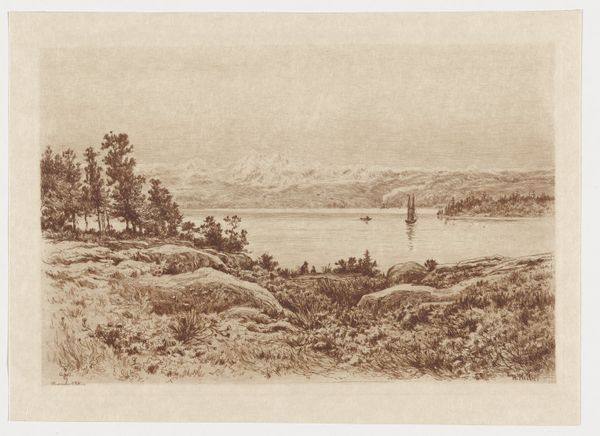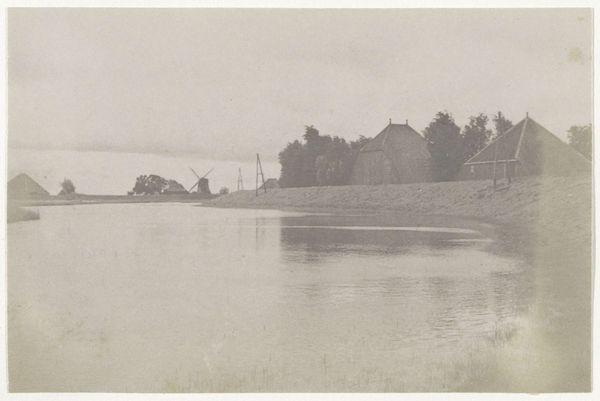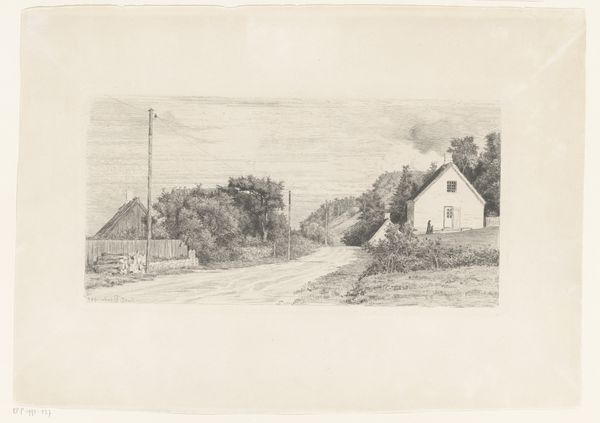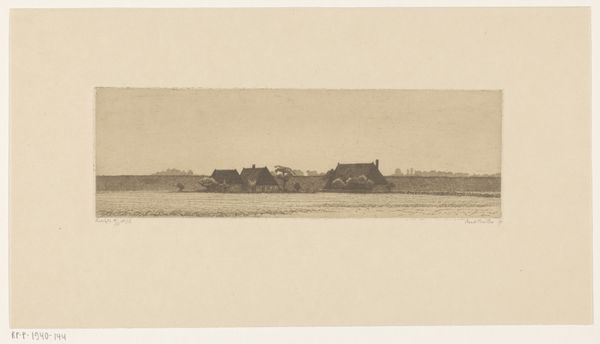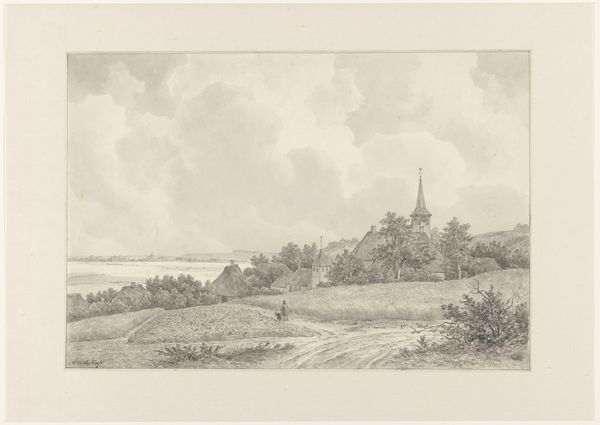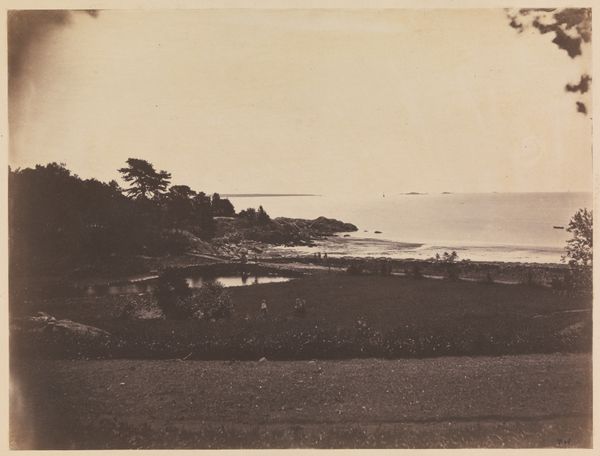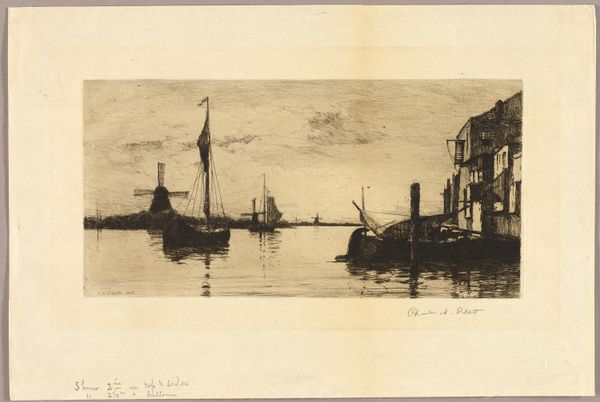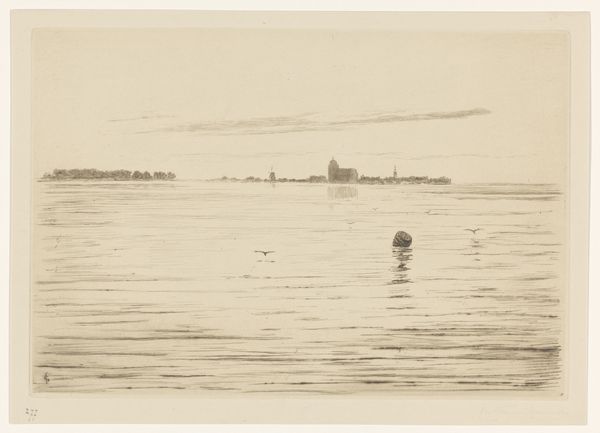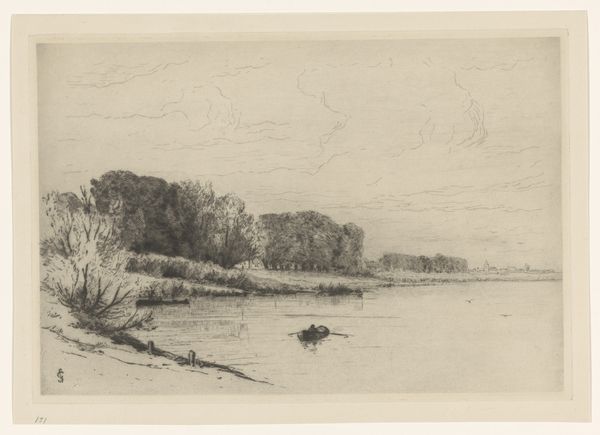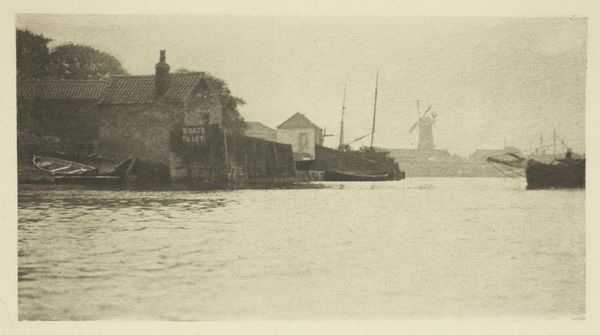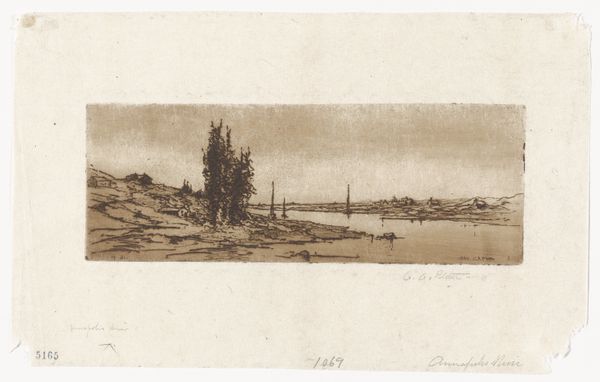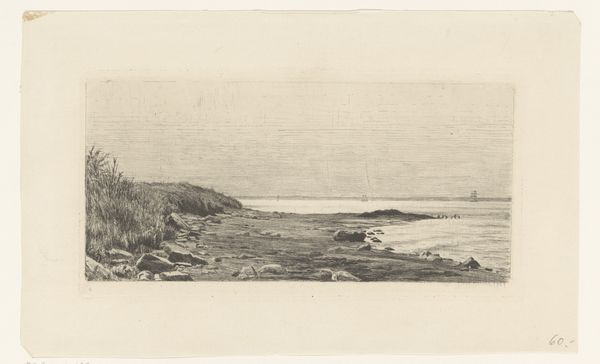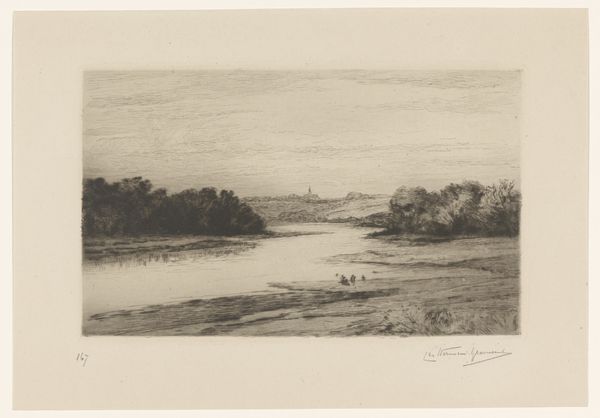
print, etching
# print
#
etching
#
landscape
#
realism
Dimensions: image: 307 x 570 mm sheet: 405 x 666 mm
Copyright: National Gallery of Art: CC0 1.0
Curator: This is John O. Anderson's "Untitled (Coastal Scene)", an etching from 1891. What catches your eye about it? Editor: It has this wistful quality, doesn't it? Almost melancholic. The monochrome really contributes to that atmosphere. The houses are huddled together against what feels like a vast emptiness. Curator: Right, and I find that interplay between the domestic space and the wide-open seascape quite interesting. Anderson uses this symbolic positioning to reflect a psychological dependence on familiarity, with these people isolated but also together. Look how small the boats are relative to the overall view of the water, and by contrast how emphasized the architectural structures in the distance appear. Editor: The emphasis also comes from the etching technique itself. I’m thinking about the materiality here. Etching allows for such incredibly fine lines, especially evident in the foreground. You can almost feel the roughness of that path and those reeds. It also strikes me how the smoke plumes contrast with the otherwise still depiction of landscape. Is this intended to show industry's advance? Curator: I think it shows a sort of harmonious relationship to the land, at least on the surface. Those tiny puffs of smoke signal life, progress, comfort, especially when coupled with the sight of what is likely a church spire in the distance to the left, which also may lend that melancholy aspect of "pastoral elegy" to the artwork's context. Editor: It is beautifully composed, the viewpoint situated on a sort of midground, just before one can experience the implied vista over the calm inlet of water. But it also hints at the human impact on even the most seemingly natural of settings. Etching as a repeatable medium made images like this more accessible; to who do we think this was marketed to in the period? Curator: Probably members of artistic and amateur print clubs, a new middle class that sought cultural belonging through possessing small, domestic artwork. I feel Anderson speaks to an underlying unease of finding permanence in change. Editor: The contrast between natural scene and industrial impact certainly sets a complex feeling. I feel this piece showcases a beautiful technical rendering with quiet, contemplative meaning. Curator: Indeed. Anderson's etching provides us with a complex and multi-layered vision of 19th-century landscape art.
Comments
No comments
Be the first to comment and join the conversation on the ultimate creative platform.
